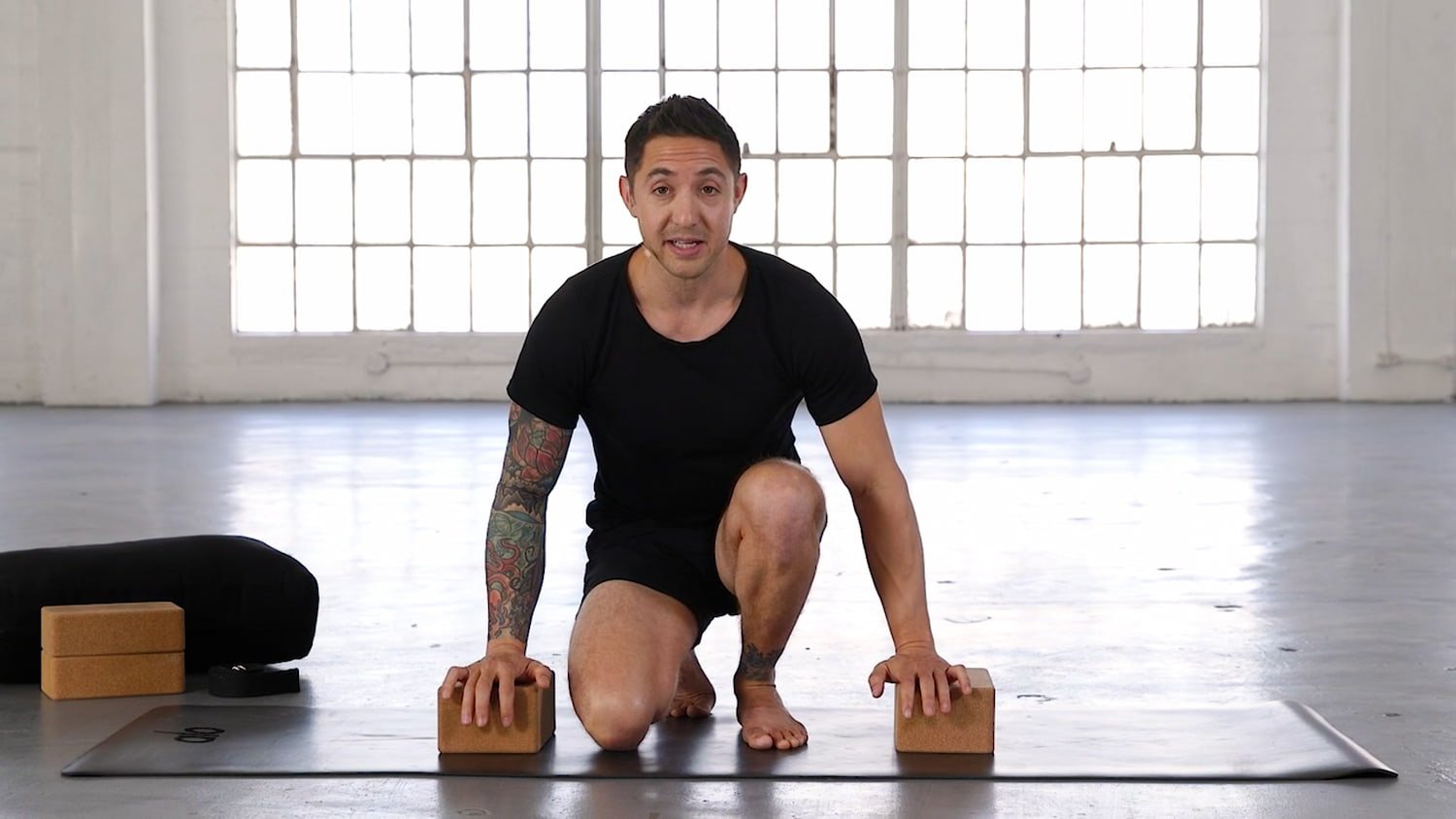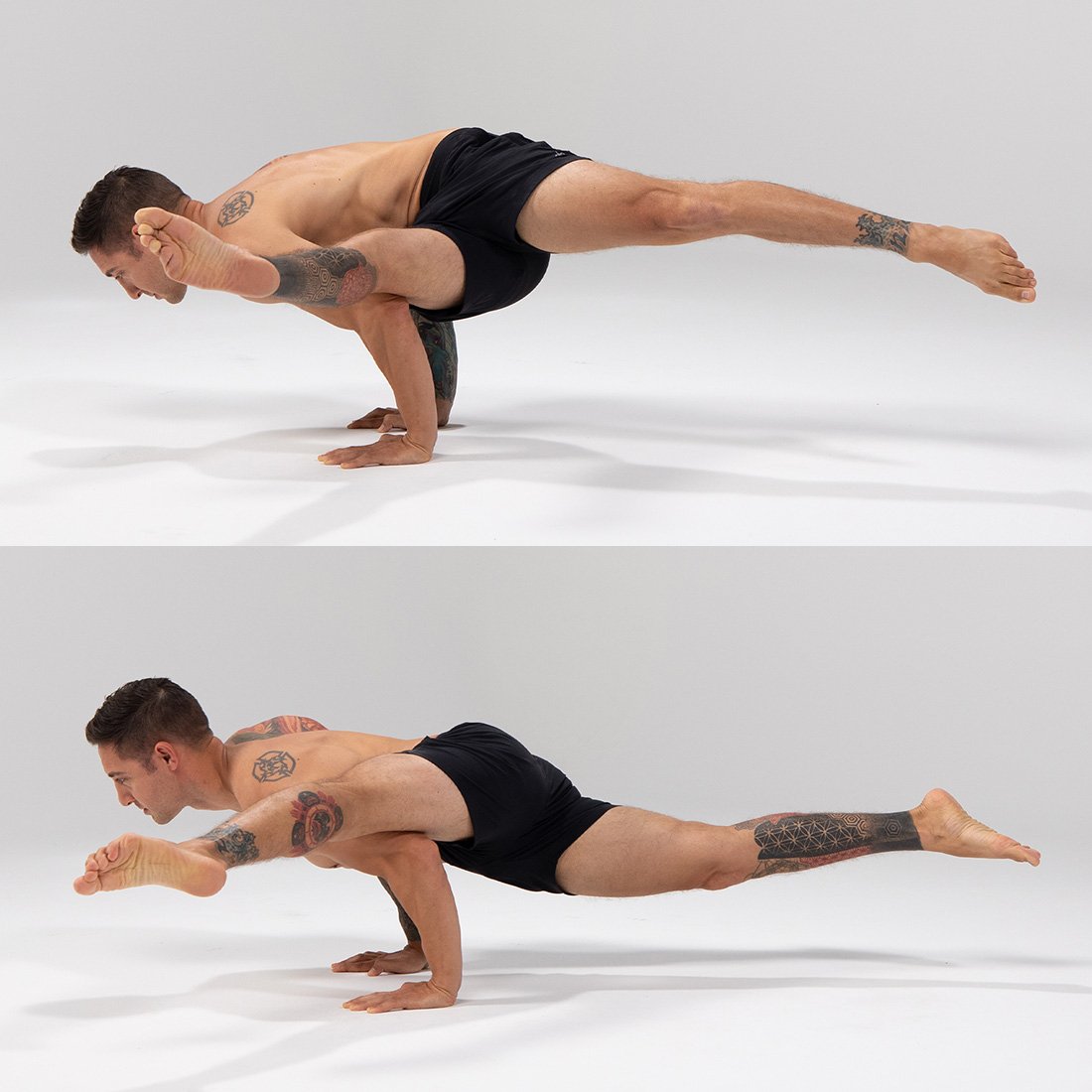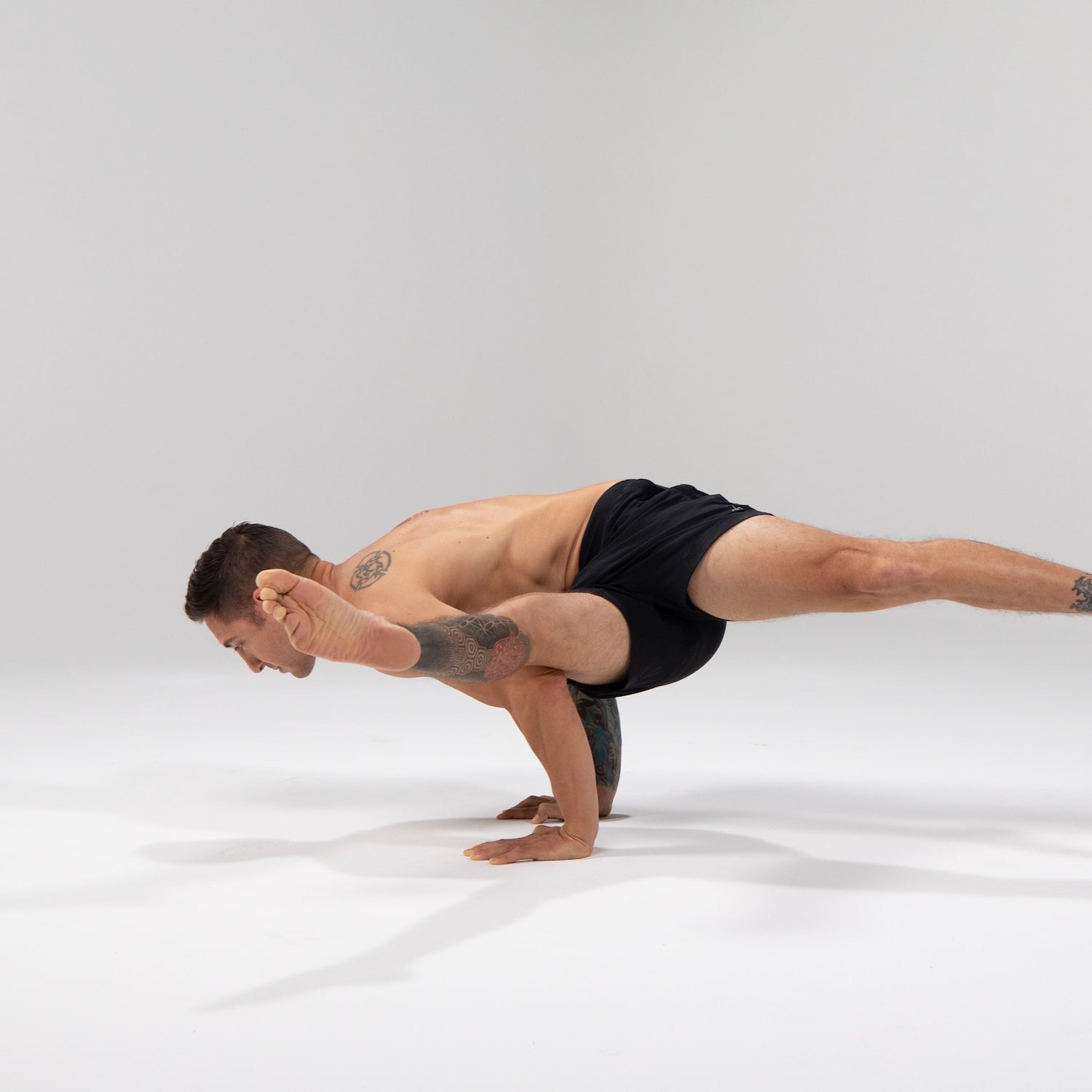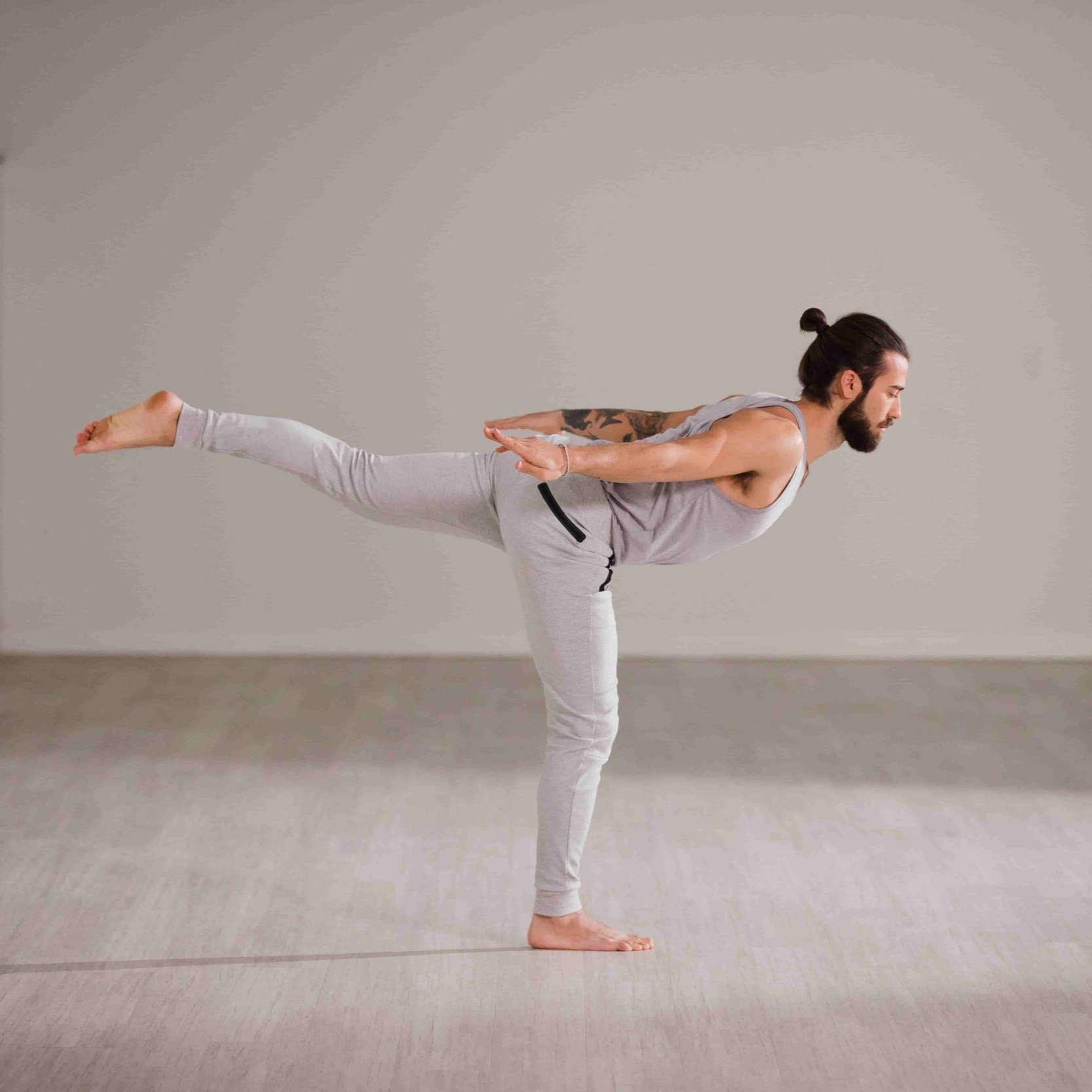Pose Breakdown: Eight Angle Pose
Twist your body up into Eight-Angle Pose (Astavakrasana), an advanced arm-balance posture that tests both your strength and flexibility. Like Crow or Firefly, you’ll be floating close to the ground with your arms, on some level, supporting your legs — but this pose involves not just balance, but twisting and binding.
In this whole-body challenge, you’ll hold your arms in a Chaturanga position with your legs floating to one side, locked around one of your arms. Eight-Angle Pose is an impressive-looking shape, but it’s also a heat-building pose that can burn away distractions.
Before starting your Eight-Angle Pose journey, you should be fully comfortable with arm balancing postures and able to keep your shoulders straight and steady within them. If you’re not quite ready yet, work on mastering Crow, Firefly, and Crow Pose variations like Side Crow. Once you start working on Eight Angle, go slowly — you can even work on it one step at a time.
Benefits of Eight Angle Pose
Tones your core
Improves balance and focus
Strengthens upper body and wrists
Contraindications
Consult a medical professional or avoid this pose if you have any issues affecting your wrists, arms, hips, shoulders, spine, or knees, including injuries.
Warm-Up Poses for Eight-Angle Pose
WIDE LEGGED FORWARD FOLD
BOUND ANGLE POSE
HAND-TO-FOOT POSE
CHATURANGA DANDASANA
REVOLVED CRESCENT LUNGE
FIREFLY
HALF LORD OF THE FISHES
SIDE CROW
How to Do Eight-Angle Pose
1.
From a seated position, send one leg out in front of you with the other leg bent.
2.
Lift your bent leg up and cross your opposite-side hand over to the pinky-toe edge of the foot. Place the same-side hand underneath your calf and use it to hoist that leg over your shoulder like a backpack strap.
3.
Point your toes and clamp that shoulder with your leg.
4.
Place your hands flat next to your hips. Push down to lift your hips up off the ground.
5.
Lift your straight leg off the ground, cross the straight leg over your bent-leg ankle, and create a hook by flexing your feet.
6.
Extend your legs out to the side, squeeze your arms with the inner thighs, and bend your elbows like Chaturanga.
7.
Look down for extra balance, out toward your legs, or forward.
Follow Up Poses for Eight Angle Pose
CHILD’S POSE
STANDING FORWARD FOLD
DOWNWARD FACING DOG
HAPPY BABY
Eight-Angle Pose With Blocks
A couple of blocks can give you the extra spaciousness you need to work your way into Eight-Angle Pose. Start with a block on either side of your body, then push your hands up on those instead of the floor.
You can also use your blocks to practice getting into the pose before you’re ready for the full expression. This arm and core-strengthening drill comes from Alo Moves instructor Dylan Werner’s Eight-Angle Pose class in his School of Arm Balance series.
Eight-Angle Pose Block Drill
1.
Place a yoga block on each side of your body.
2.
From a seated position, straighten out one leg. Bring the other leg up over or close to your shoulder. Lock it in with your tricep.
3.
Place a hand on each block and straighten your arms to lift your butt off the floor.
4.
Whatever it is, the way you tell your story online can make all the difference.
5.
After you can do Step 4 comfortably, try lifting your straight leg off the ground. This tests your quad and core and, depending on your body, might even feel harder than full Eight Angle Pose.
What Does Astavakrasana Mean?
Astavakrasana, the Sanskrit name for the posture, roughly translates to “Eight-Angle Pose”: “asta” means “eight” and “vakra” means curved or bent. It’s dedicated to Ashtavakra, a sage in Hindu mythology that, after being cursed by his father, was born with bends or twists in his feet, hands, knees, chest, and neck. Within the mythos, he’s the author of the Ashtavakra Gita, a text on nonduality, freedom, and self-awareness. Like the Bhagavad Gita, it’s structured as a dialogue — in this case, it’s between Ashtavakra and Janaka, an ancient king.
For just a taste of Asktavakra’s teachings, here’s his first response, translated by Ramesh S. Balsekar in 1989: “My child, if you are seeking liberation, shun the objects of the senses like poison and seek forgiveness, sincerity, kindness, contentment, and truth like you would seek nectar.”
Check out a more in-depth breakdown of Eight Angle Pose in Dylan Werner’s School of Arm Balance series with Dylan Werner, available for free with a 14-day trial to Alo Moves.




























